DMM Aneng AN8008
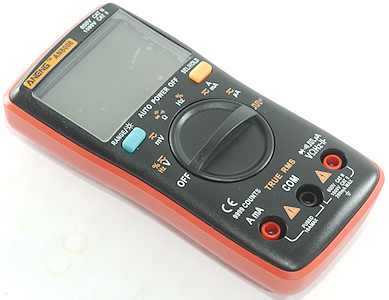
This is a cheap DMM with all common function.
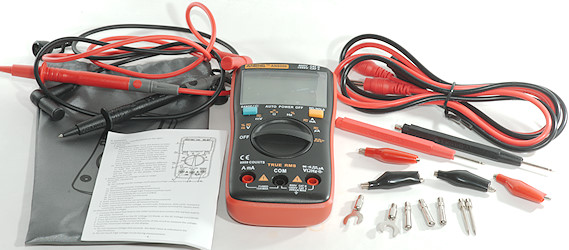
It included the DMM, two pair of probes and a manual.


The standard probes has removable tip covers.

The probes are rated for 10A, I would not trust that but use some more solid wire for 10A range.
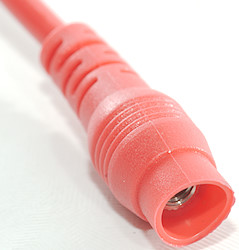

The other set of probes fells rather low quality, but has some nice functions. They consist of two wires with threads at both ends and a couple of different tips that can be mounted in each end. It is slow to use, but very flexible.
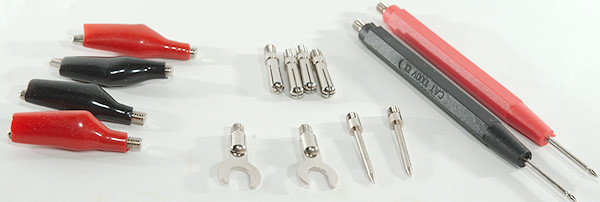
Here are all the different tips.


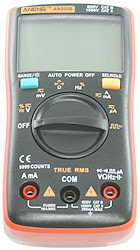
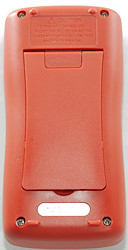
The body of the DMM feels solid, the plastic is rather smooth, i.e. the DMM can easily slide on a surface. The tilting bale is rather flimsy and do not give enough support for pressing buttons and turning the range switch.
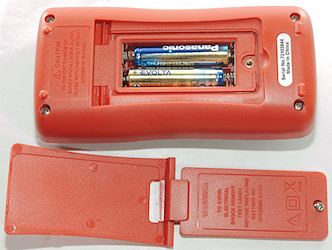
Display
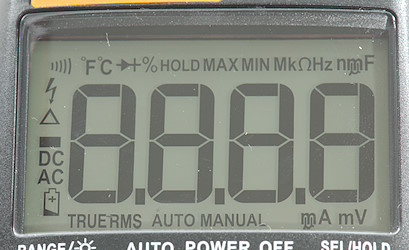
The above picture shows all the segments on the display.
Notice how u and m symbols are at multiple locations, making it possible to show them just before the unit.
The °F, °C, MIN, MAX and delta indicators are not used on this meter.

Typical display during usage, it will show the number and what measurement is selected.
Functions
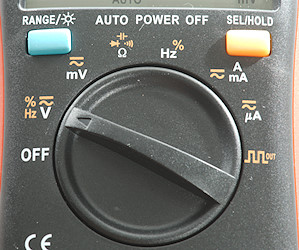
Buttons:
-
Range (Blue): Will disable auto range and change range, hold down to activate background light.
-
Sel/Hold (Yellow): Select the ranges printed with yellow, hold down to freeze the display reading.
Rotary switch:
-
Off: Meter is turned off
-
V % Hz: Show voltage, using the yellow button will cycle between VDC, VAC, freq. and duty cycle.
-
mV: Show millivolt, using the yellow button will cycle between VDC and VAC
-
ohm: Resistance, continuity, diode and capacitance
-
Hz: Frequency and duty cycle.
-
A mA: Current AC and DC.
-
uA: Current AC and DC.
-
Square: Frequency out, use the yellow button to select from 50Hz to 5000Hz
Input
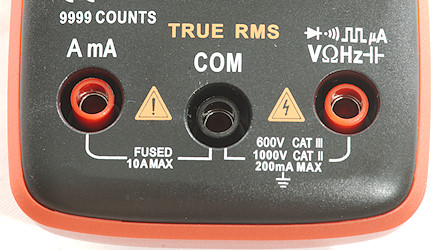
-
A mA: A very low burden voltage mA range and a 10A that cannot really handle 10A.
-
CON: The common terminal for all ranges.
-
xxx: All other ranges, including uA. It is always problematic when a current range shares connector with a voltage range, if the switch is in the wrong position the (hard to replace) fuse will blow (at least). This will only affect current, voltage will still work.
Measurements
-
Volt and frequency
-
AC volt can measure up to about 2kHz (RMS will not work at the frequency).
-
At 1Vrms input frequency range is from 1Hz to 3MHz
-
Input impedance is 10Mohm on DC and AC
-
mV range is high input impedance for both DC and AC
-
Frequency input needs about 180mV to work at 1kHz.
-
Frequency counter and duty cycle works without zero crossing in Hz range.
-
-
Current
-
10A range is badly calibrated at high current.
-
10A range will change some percent at 5-10A current due to heating.
-
10A range will give an audible alarm when current is above 10A (uA will not).
-
-
Ohm, continuity, diode and capacity
-
Ohm voltage is 1V open and 0.42mA shorted
-
Continuity is fast (About 20ms).
-
Continuity beeps when resistance is below 50ohm.
-
Continuity is 1V open and 0.42mA shorted
-
Diode voltage is 3.2V with display of up to 3.000V with 0.2mA, maximum current is 1.8mA shorted
-
70000uF takes about 8 seconds to measure.
-
-
Miscellaneous
-
A beeper will sound shortly before the meter turns itself off
-
Current consumption of meter is 1.6mA (7.5mA with backlight)
-
Meter works down to 2.2V where it turns off, battery symbol show at 2.4V.
-
Readings are stable with changing battery voltage.
-
Backlight only works down to about 2.6V where it is fairly dim.
-
Possible output frequencies are: 50, 100, 200, 300, 400, 500, 600, 700, 800, 900, 1000, 2000, 3000, 4000, 5000.
-
Viewing angle is good, except from the top.
-
Display updates around 3 times/sec
-
Backlight will automatic turn off in about 15 seconds.
-
Will automatic turn power off in about 15 minutes.
-
The meter usual need a couple of display update to reach the final value.
-
Weight is 136g without assories, but with batteries.
-
Size is 130.2 x 65 x 32.3mm
-
-
Probes
-
Probe resistanse 59mOhm for one.
-
Probe wire is fairly soft and 65cm long.
-
The probes with replaceable tips has 55mOhm with 4mm plug.
-
The probes with replaceable tips has 85cm long fairly soft wires.
-

A look at the capacity measurement waveform.
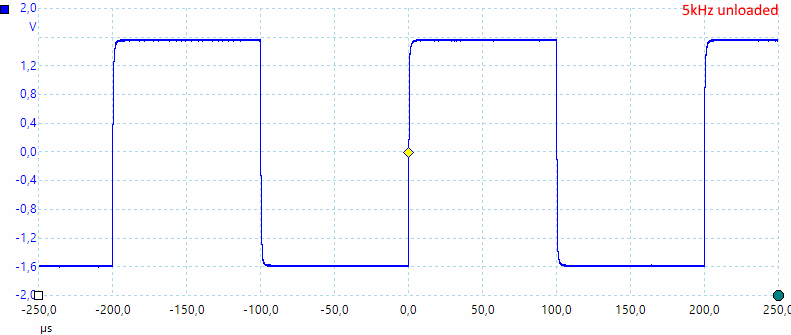
Frequency output at highest frequency, it is a +/- 1.6V signal.
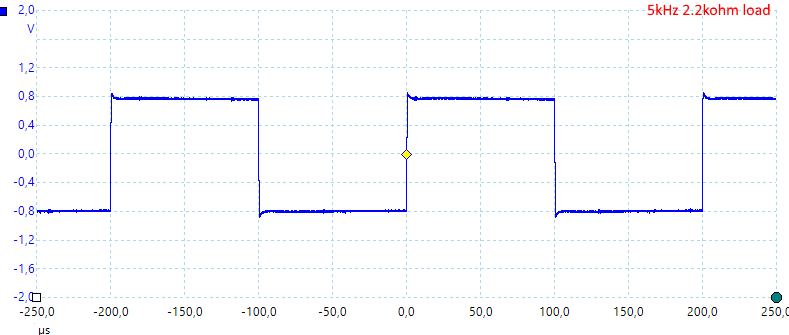
Loading the output to half output voltage shows the impedance is about 2.2kohm
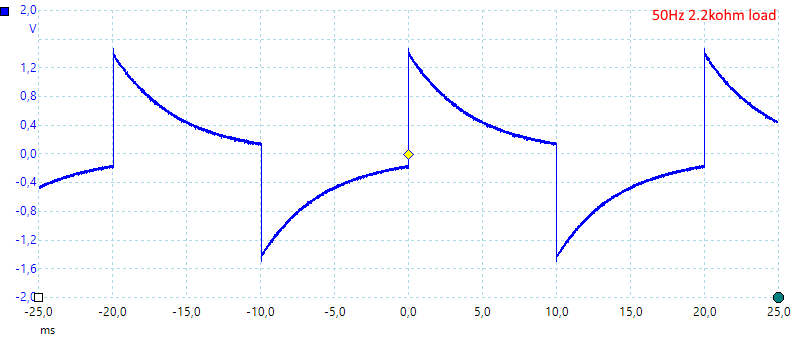
Reducing the frequency shows that it has a capacitor in the output.

Tear down
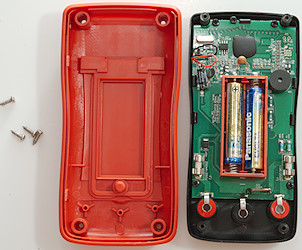
Four screws and the back could be removed.
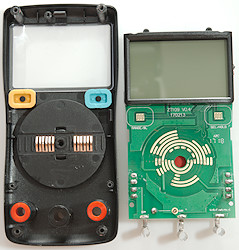
5 more screws and some clips for the front.
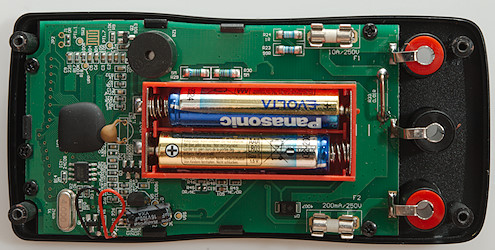
The big black blob (IC2) on the circuit board is the main IC, besides it is a EEPROM (IC1: 24C02A) for calibration and parameters. There are transistors for backlight (Q1) and for the buzzer (Q2), The transistor Q5 is a reference (ICL8069 1.2V), not a transistor. There is also a hidden switch (SW3), I do not know what it do. For the current output (Ohm and capacity ranges) is some protection: a PTC (PTC1) and two transistors (Q3 & Q4). One 100ohm is used for the uA range, the 1ohm alone can be used for a full mA range in some other similar models.
Besides the battery box is the main input drop resistors (R29:5Mohm & R30:5Mohm). Near the 10A fuse (F1) is the resistors for uA (R23 & R24) these two resistors are protected by F2 and D5 (A probably bidirectional Zener diode).
The two fuses are very short and not a standard size.
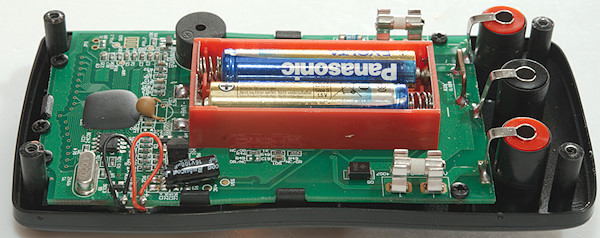
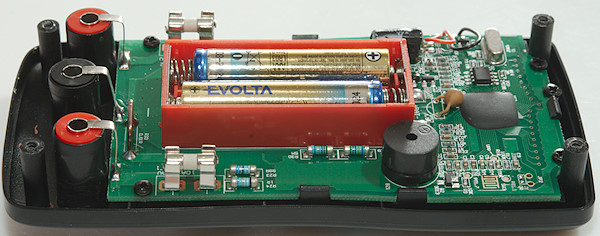
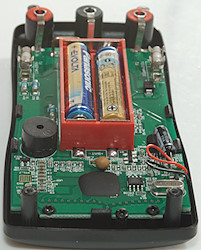
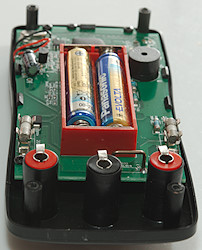
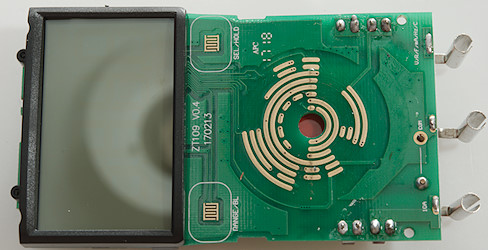
No parts on this side, only the switches and a missing solder for the current shunt it is only soldered on the other side.
Notice the input is marked mA, not uA.
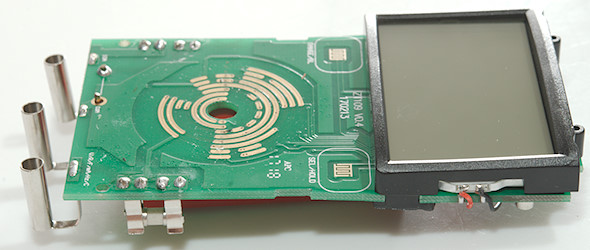
Conclusion
The meter is easily within the specified tolerances (Except 10A) and it has lot of functions and ranges, but the CAT rating is fake.
This is a small DMM in size, but has most of the expected functions in a universal DMM. It has a hole in the current range, it can measure currents in that range, but with fairly low precision, instead it has very low burden voltage in the mA range and low precision at high current.
I do not like the small fuse size, they cannot break high voltage or high current and they can be hard to source locally (They can be found on Ebay). The current range on the voltage input is also a bad idea.
The 9999 count secures the best possible resolution for 4 digits.
I will call it good DMM for hobby use, but keep it away from anything with mains voltage and lots of amps.
Notes
This meter exist with many different names on it and small variations in functions.
How do I review a DMM